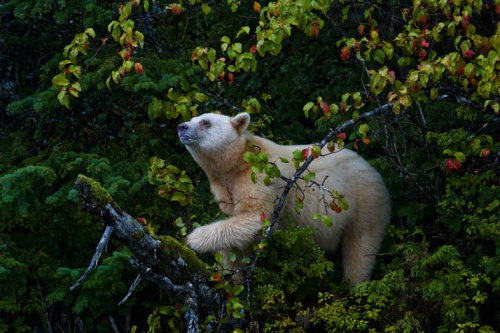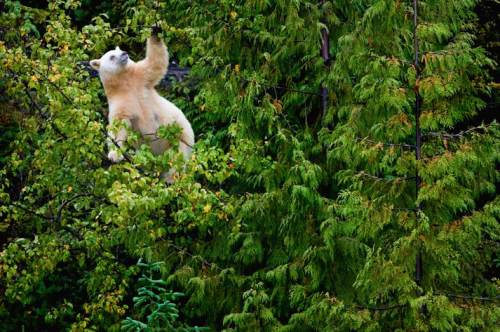Astronaut Readjusts To Life Back On Earth
Astronaut readjusts to life back on Earth
> Don’t give him a baby for a while.
More Posts from Rocks-everywhere and Others





Blue tit/blåmes.
Me, just an unstoppable juggernaut of geology fun facts once I get started: And did you know that Frankenstein and Dracula were written during the year without a summer? A time when Ash from a big volcanic eruption covered much of Europe for the whole summer forcing it into a dark volcanic winter and so the Gothic Mood was influenced by a geological catastrophe at the time. Our art and culture are and have always been heavily influenced by the changes of the shifting rocks beneath our feet and the interplay of how we interact with and react to the world around us is fascinating.
cave exploring, thailand
Unearthing Ireland’s deepest fairy secrets and darkest myths

A fairy fort, with corn stooks of four sheaves each, in Loughinisland, Co Down, in 1962. Photograph: Michael J Murphy/duchas.ie
“A worldwide crowdsourcing movement is currently unearthing Ireland’s deepest fairy secrets and darkest myths. A voluntary collective online is working its way through transcribing 700,000 pages of folklore that were collected throughout Ireland between 1937 and 1939. This mass of previously inaccessible material was gathered by more than 100,000 children who were sent to seek out the oldest person in their community just before second World War to root out the darkest, oddest and weirdest traditional beliefs, secrets and customs, which were then logged into 1,128 volumes, titled the Schools’ Manuscripts Collection.
Half a million pages have been digitised by the National Folklore Collection, of which more than 100,000 pages have now been transcribed by volunteers, revealing the fairy situation in every townland, the types of leprechaun and butter churn common to each area, the names of people who tried to steal gold and what happened to them, or who had relationships with mermaids. There is material on local cures, holy wells, strange animals, travelling folk and spirits.”
The Irish Times
OMG. THIS IS AMAZING.










the great bear rainforest in british columbia is one of the largest coastal temperate rain forests in the world, with twenty five thousand square miles of mist shrouded fjords and densely forested islands that are home to white furred black bears.
neither albino nor polar bear, these rare black bears (there are fewer than five hundred) are known as kermode bears, or what the gitga’at first nation call mooksgm’ol, the spirit bear — a word they did not speak to european fur traders lest the bears be discovered and hunted. to this day, it remains taboo to hunt a spirit bear, or to mention them to outsiders.
the white fur in these bears is triggered by a recessive mutation of the same gene associated with red hair and fair skin in humans. though it remains unclear as to how the trait arose (or disappeared), it is especially pronounced on certain islands.
photos by (click pic) paul nicklen x, fabrice simon, denis binda, kyle breckenridge, and paul burwell
What if... what if I WANT an info dump???
Then you're my favorite and I will dump SO much info on natrocarbonatite lava
No one knows for sure why or how this type of lava forms. Oldoinyo Lengai is the only volcano on earth that actively erupts it currently, and Oldoinyo Lengai hasn't been extensively studied.
The factor that causes lava to be viscous (thick, and sticky) is its silica content. Rhyolitic magmas, like those in Washington, have around 70 weight % silica. Basaltic magmas, like the volcanoes in Hawai'i, are around 45 wt% silica. Natrocarbonatite lava is less than 3% silica. Its flow rate is close to water, so it flows faster than you can outrun.
It's also a LOT less hot than other lavas. Most lavas are from 700-1200 degrees C (basaltic lavas in the higher range, rhyolitic lavas in the lower), but natrocarbonatite is around 500-600 degrees C. It's cool enough that you won't immediately die if you fall into it (you'll be hospitalized for months, as one man who fell into it was, but it's survivable). It's so cool that you can't see it glow in daylight.

It flows black and cools white! This is because of its content of the minerals nyerereite and gregoryite, which are unstable and break down quickly when exposed to humidity.
Basically it's cool as fuck literally and figuratively and I'm obsessed with it


Smoky quartz with the inclusion of hydrocarbons ( oil and bitumen ) Alatau Ridge, Republic Of Bashkortostan, Ural, Russia Photo: Pakhneva Ekaterina


Omg lol.

What did South Eastern Australia look like 130 million years ago? This watercolour landscape is part of my on going work recontructing fossils discovered last summer in Boola Boola Forest, Gippsland Victoria. They date back to the Early Cretaceous period - the golden age of the dinosaurs.
.
On our dig we found fossils of every species shown in this illustration. The plants in the foreground and fossil shown here is Otozamites douglasii, a member of the cycad-like Bennettitales which are completely extinct now. However the rest of the scene depicts plants that have similar modern decendants: Cladophlebis ferns down low, a forest of conifers including Bellarinea richardsii (Podocarp family), and very tall Brachphyllum tyersensis (Belonging to either the Araucaria or Cypress family).
-
 matchawithlemon reblogged this · 2 weeks ago
matchawithlemon reblogged this · 2 weeks ago -
 matchawithlemon liked this · 2 weeks ago
matchawithlemon liked this · 2 weeks ago -
 randomish-things reblogged this · 2 weeks ago
randomish-things reblogged this · 2 weeks ago -
 chase-the-windandtouch-the-sky liked this · 2 weeks ago
chase-the-windandtouch-the-sky liked this · 2 weeks ago -
 marinettepotterandplagg reblogged this · 2 weeks ago
marinettepotterandplagg reblogged this · 2 weeks ago -
 star-x-shine reblogged this · 2 weeks ago
star-x-shine reblogged this · 2 weeks ago -
 star-x-shine liked this · 2 weeks ago
star-x-shine liked this · 2 weeks ago -
 damage-incorp0rated reblogged this · 2 weeks ago
damage-incorp0rated reblogged this · 2 weeks ago -
 damage-incorp0rated liked this · 2 weeks ago
damage-incorp0rated liked this · 2 weeks ago -
 star-clad-dragon reblogged this · 2 weeks ago
star-clad-dragon reblogged this · 2 weeks ago -
 mikellaetchramblings reblogged this · 2 weeks ago
mikellaetchramblings reblogged this · 2 weeks ago -
 mikellaetchramblings liked this · 2 weeks ago
mikellaetchramblings liked this · 2 weeks ago -
 renkyol reblogged this · 2 weeks ago
renkyol reblogged this · 2 weeks ago -
 mydedelleblog liked this · 2 weeks ago
mydedelleblog liked this · 2 weeks ago -
 mossmanlover reblogged this · 2 weeks ago
mossmanlover reblogged this · 2 weeks ago -
 mossmanlover liked this · 2 weeks ago
mossmanlover liked this · 2 weeks ago -
 thatll-do reblogged this · 2 weeks ago
thatll-do reblogged this · 2 weeks ago -
 yeehawkins reblogged this · 2 weeks ago
yeehawkins reblogged this · 2 weeks ago -
 onespudtorulethemall liked this · 2 weeks ago
onespudtorulethemall liked this · 2 weeks ago -
 run-with-wolves reblogged this · 2 weeks ago
run-with-wolves reblogged this · 2 weeks ago -
 run-with-wolves liked this · 2 weeks ago
run-with-wolves liked this · 2 weeks ago -
 lishatee reblogged this · 2 weeks ago
lishatee reblogged this · 2 weeks ago -
 planetary-wolf reblogged this · 2 weeks ago
planetary-wolf reblogged this · 2 weeks ago -
 freiha reblogged this · 2 weeks ago
freiha reblogged this · 2 weeks ago -
 fandoms-princess reblogged this · 2 weeks ago
fandoms-princess reblogged this · 2 weeks ago -
 fandoms-princess liked this · 2 weeks ago
fandoms-princess liked this · 2 weeks ago -
 newtcallsmetommy reblogged this · 2 weeks ago
newtcallsmetommy reblogged this · 2 weeks ago -
 newtcallsmetommy liked this · 2 weeks ago
newtcallsmetommy liked this · 2 weeks ago -
 mini-gally reblogged this · 2 weeks ago
mini-gally reblogged this · 2 weeks ago -
 couchdough liked this · 2 weeks ago
couchdough liked this · 2 weeks ago -
 chelseymarie12 liked this · 2 weeks ago
chelseymarie12 liked this · 2 weeks ago -
 howdidweend reblogged this · 2 weeks ago
howdidweend reblogged this · 2 weeks ago -
 acreatureofhope liked this · 2 weeks ago
acreatureofhope liked this · 2 weeks ago -
 per1w1nkl3 reblogged this · 2 weeks ago
per1w1nkl3 reblogged this · 2 weeks ago -
 per1w1nkl3 liked this · 2 weeks ago
per1w1nkl3 liked this · 2 weeks ago -
 knikna reblogged this · 2 weeks ago
knikna reblogged this · 2 weeks ago -
 lostinliminalspaces reblogged this · 2 weeks ago
lostinliminalspaces reblogged this · 2 weeks ago -
 wrylylichen reblogged this · 2 weeks ago
wrylylichen reblogged this · 2 weeks ago -
 everythingisshinnyandglitters reblogged this · 2 weeks ago
everythingisshinnyandglitters reblogged this · 2 weeks ago -
 everythingisshinnyandglitters liked this · 2 weeks ago
everythingisshinnyandglitters liked this · 2 weeks ago -
 raynareverie liked this · 2 weeks ago
raynareverie liked this · 2 weeks ago -
 latinlover109 liked this · 2 weeks ago
latinlover109 liked this · 2 weeks ago -
 gooses-trenchcoat reblogged this · 2 weeks ago
gooses-trenchcoat reblogged this · 2 weeks ago -
 sanguisinexelsis liked this · 2 weeks ago
sanguisinexelsis liked this · 2 weeks ago -
 rather-be-a-dragon liked this · 2 weeks ago
rather-be-a-dragon liked this · 2 weeks ago -
 rather-be-a-dragon reblogged this · 2 weeks ago
rather-be-a-dragon reblogged this · 2 weeks ago -
 twilitdragoneye liked this · 2 weeks ago
twilitdragoneye liked this · 2 weeks ago -
 blackthornish liked this · 2 weeks ago
blackthornish liked this · 2 weeks ago -
 teenagedirtbag087 liked this · 2 weeks ago
teenagedirtbag087 liked this · 2 weeks ago -
 borntothegrave liked this · 2 weeks ago
borntothegrave liked this · 2 weeks ago
225 posts
